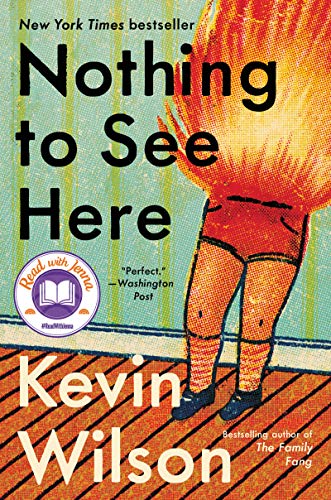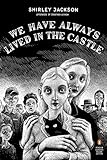Before the pandemic, books were books.
Equal parts shadow and illumination, Helen Phillips’s The Need emerged as a sort of sci-fi chiaroscuro portrait of motherhood. Nothing to See Here by Kevin Wilson, a book which I’ve recommended to a dozen people since, was a delight with its wholly original narrator and combustible kids. And Normal People by Sally Rooney, which I knew I needed to read but had been putting off (probably because so many people had been so very enthusiastic about it), ultimately made me feel very old.
But then, March. Then, my child’s kindergarten teacher says to me, “I don’t know if we’re ever coming back.” And we didn’t. We never went back. I kept reading, but it got weirder, or maybe I did.
I picked up Never Let Me Go, Kazuo Ishiguro’s dystopian parable, and as I read, was overcome with the horrible sense we were all hopelessly doomed. Certainly, we had all been doomed well before I read this book, but the book seemed darkly prescient, specifically regarding state-mandated self-sacrifice. At the same time, I also read The Water Cure by Sophie Mackintosh, a story that takes place on an isolated island within the cultic walls of a crumbling sanatorium while a plague that might or might not be real lurks on the mainland. In this book, the weather is warmer, but the dread is still the same.
It took me months to read these two books, even though I never left my house, months of my child there beside me, this is how you subtract, this is how you read, painting and bike rides and snacks, more snacks, and what day is it? and, no, I don’t know how long we’ll live here or if we’ll ever leave.
Cue the children’s books, read aloud over the long spring, the even longer summer. We started with the first five books of The Wizard of Oz and its psychotic menagerie of characters: a race of vegetable people, Polychrome, the rainbow’s daughter, a talking chicken named Billina, the Shaggy Man. Then the nightmares started in earnest, so we tried Little Nemo: Return to Slumberland, a graphic novel series by Eric Shanower, illustrated by Gabriel Rodríguez, that charts a little boy’s tumble each night into a conflicted dream world. In retrospect, the original The Adventures of Pinocchio written in 1883 by Carlo Collodi probably wasn’t a good choice: in the opening pages, Geppetto is arrested under charges of child abuse. Soon after, the cricket confronts Pinocchio about his naughtiness, and Pinocchio murders him with a hammer. Finally, Charlotte’s Web by E.B. White was way too sad of a book to read this year, though Charlotte is a just and rebellious spider for our times.
In my own reading, I looked for books to distract me, something fun, something light, something. True Love by Sarah Gerard I read in a few days, the familiar 20-something mess-of-a-protagonist a welcome reprieve from the news. And Mark Polanzak’s collection of playful and poignant fabulist shorts, The OK End of Funny Town, provided stories the perfect length for my ever-attenuating attention span. I wanted to read Writers & Lovers by Lily King forever. (I wish I were still reading it.) And I think this incomprehensible world became a bit more coherent after the brilliant essays of Elisa Gabbert in The Unreality of Memory, though I wouldn’t label this book an escape so much as a sinking deep down into it, which I suppose was inevitable.
And then there were the firsts, inspired by a desire for something novel after so many same days. Had I ever read a biography? Somehow no, so why not try Sarah Smarsh’s whip-smart and endlessly entertaining biography of Dolly Parton, She Come By It Natural? Do I generally pick up sweeping family sagas? Again no, but Brit Bennett captivated me with her exquisitely drawn characters and time-weaving storyline in The Vanishing Half. A few wonderful debuts for good measure included You Exist Too Much by Zaina Arafat and The Butterfly Effect by Rachel Mans McKenny. And once it re-opened, I started checking out art books from the public library, among them feminist art icon Louise Bourgeois’s Drawings and Observations, which features a lifetime’s worth of her work accompanied by passages that sound very much like tarot card readings. This was perhaps my favorite book of 2020.
Now, as the year concludes, all I want is some comforting horror, a mad woman with whom I can relate, or crew of familiar poltergeists, and so far Shirley Jackson has given me just that in We Have Always Lived in The Castle and The Haunting of Hill House.
“Year in Reading”? More like “Year in Feeling,” these books an echo of who we can never be again, or who we might horribly become, of hollow tragedy, actual magic, childish cruelty, love, hate, death. Can books save us? Absolutely not, but maybe they already did.
More from A Year in Reading 2020
Don’t miss: A Year in Reading 2019, 2018, 2017, 2016, 2015, 2014, 2013, 2012, 2011, 2010, 2009, 2008, 2007, 2006, 2005




















